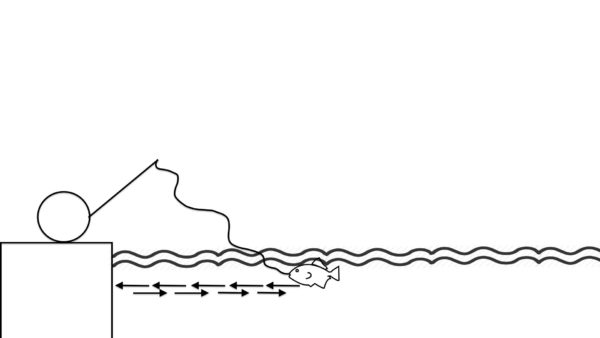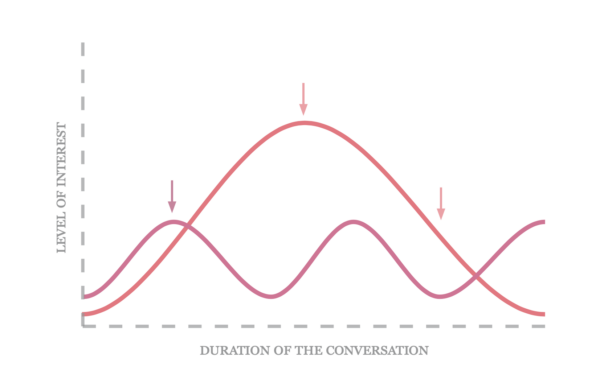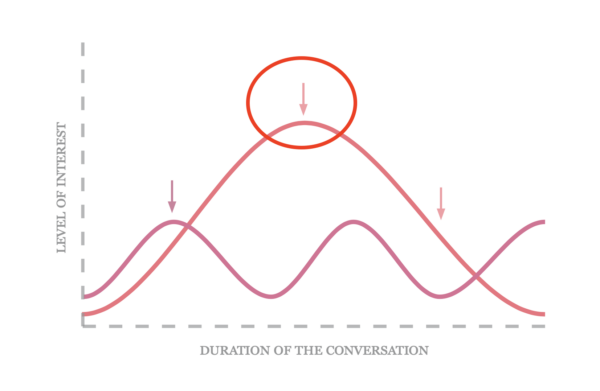Today we’re going to be talking about how to get an avoidant to chase you. Specifically, I’ve come up with seven of the core tenets that can help ensure an avoidant will find you attractive and ultimately begin to chase you.
- Understand Why Avoidants Are Conflict Averse
- Realize That Avoidants Have “The One That Got Away” Syndrome
- Understand The Role Secure Attachment Gravity Plays In Making Them Chase You
- Adopt The Fishing Mentality When Dealing With Avoidants
- Utilize The Zeigarnik Effect
Like all things in the dating realm this is not an exact science, it’s more of an art. Nevertheless, buckle up because we have a lot to cover here.

What Are Your Chances of Getting Your Ex Boyfriend Back?
Take the quizCore Tenet #1: Understand Why Avoidants Are Conflict Averse
As it turns out the best way to “make” an avoidant miss is you is first to understand why they operate the way they operate.
So, what is an avoidant attachment style?
Well, it generally starts in childhood when their parent or caretaker doesn’t provide necessary care past food and shelter. In other words, while the child is receiving basic physical necessities they aren’t receiving emotional ones.
As this attachment style forms and develops into their adult lives it impacts their relationships in some interesting ways,
- They are likely to avoid physical touch
- Avoid eye contact
- Rarely bring up problems
- Difficulty having open and honest conversations
- Difficulty with long term commitments
The one common denominator here is that they become conflict averse. Believe it or not there’s a physiological reason for why they are this way.
Generally my business focuses on breakups and we’ve learned a lot about what breakups tend to do to avoidants.
Simply take a look at the major chemicals being released throughout all phases of a relationship below,
At the beginning of a relationship,
In the middle of a relationship,
And finally at the end of a relationship,
That elevated hormone you see there is cortisol which is often most associated with stress. For an avoidant cortisol is their worst nightmare. So much so that they’ve literally created these suppression methods to deal with it.
According to Free to Attach,
This suppression does not mean that they do not feel distress, but they are unable to generate a physiological solution when they feel overwhelmed. As a result, they overregulate to appear as if they are unaffected and are in essence emotionally paralyzed, stuck in a freeze response. The person with an avoidant attachment style may present as if they are very calm in a distressing situation when in fact their internal experience is quite the opposite. (Free To Attach)
So, what are some of the ways they can appear as if they are unaffected by you?
Typical Avoidant Coping Mechanisms:
- Constantly raising doubts about your relationship
- Not making much of an effort to dig deeper with you
- Blowing up small imperfections and allowing that to end a relationship
- The phantom ex mentality
- Flirting with others
- Not being able to say “I love you”
- Seeming distant
There’s one coping mechanism I’d like to talk about a little more in-depth and it’s a fundamental understanding you’re going to need if you want an avoidant to chase after you.
Core Tenet #2: Realize That Avoidants Have “The One That Got Away” Syndrome
A few years ago I had the honor of writing a book called, Ungettable: Becoming The Woman Every Man Wants.
The premise behind the book revolved around a phenomenon I’ve noticed within men. Namely the fact that they want what they can’t have.
Little did I know that when I started my research on avoidant attachment styles I’d learn WHY a lot of men want what they can’t have.

What Are Your Chances of Getting Your Ex Boyfriend Back?
Take the quizYou see, avoidants have this tendency to always pine after the one that got away.
This is called the phantom ex syndrome.
I talk about this concept more in-depth in this video,
Generally we find that with our clients who are trying to get an avoidant ex back they don’t start to see results until that avoidant ex thinks they’ve moved on from them. Only then will they allow themselves to “miss their ex”
The important distinction here is that they have nostalgia for the past relationship not because it was a successful relationship but rather because there is distance from the relationship.
This nostalgia lends itself to a creation in their own minds.
Someone who is literally ungettable.
The Ungettable Partner
One interesting thing about avoidant attachments is that they’ll create this fantasy of a perfect partner that has all of these unattainable traits as a way to keep current relationships at bay.
Constantly they fall victim to the one foot in one foot out mentality when it comes to relationships.
Anything to prevent a full commitment makes them feel safer.
Yet as I note in this article each avoidant has a different tipping point when it comes to commitment.
- Some are fine being in a relationship but any talk of moving in together freaks them out.
- Others are fine moving in together but any talk of future marriage plans freak them out.
So, now that you understand why avoidants operate the way they operate what can you do actually improve the odds that they’ll chase you?
Core Tenet #3: Understand The Role Secure Attachment Plays In Getting Them To Chase You
A few years ago my team and I really started unpacking attachment theory and what we learned changed the way we looked at breakups forever.
I’ll spare you the major details and cut right to the meat.
If you are looking for the best way for an avoidant to chase you then look no further than our concept of secure attachment gravity. I do a quick explainer of the concept in this video,
Here’s the general gist.
If you are able to have a secure attachment in your life all the other attachments become pulled to you like gravity.
Of course, some of my clients misunderstand this and expect immediate results. Usually it’s not an instantaneous process. Have you ever seen that funny meme online about the expectations and reality of success?
Our experience with attachment gravity has been a lot like this. It takes time and where most people fail is the fact that they don’t sustain their secure attachments over the long run.
Generally speaking when you are dealing with an avoidant person it’s going to take longer to see overall results and people tend to get discouraged and let their insecure tendencies take hold.

What Are Your Chances of Getting Your Ex Boyfriend Back?
Take the quizThe question now becomes what does having a secure attachment look like?
Someone with a secure attachment is comfortable resolving conflicts, addressing relationship challenges openly and non-defensively, comfortable with both intimacy and independence, able to show sympathy to avoidant behaviors and give the avoidant partner the space they need without pressure, but also confident articulating their needs and able to draw clear boundaries against mistreatment – if necessary walking away. (Free To Attach)
One thing to note here.
Attachment gravity can work both ways. When an avoidant and a secure attachment couple up a certain power struggle exists. The secure person is showing the avoidant person how they should react to certain things in a relationship whereas if there are cracks in that “secure” foundation then the whole house could come crumbing down.
The avoidant can pull out insecure tendencies to a once secure person
This is why it’s super important that a lot of the work you do to get the avoidant to chase you is focused only on what you can control, yourself.
Alrighty, so we have a north star that we are going to be working towards. We know that you need a secure attachment style to pull the avoidant person to you. However, simply becoming secure by yourself isn’t going to be enough to make them chase you.
Let’s start talking about tactics.
Core Tenet #4: Adopt The Fishing Mentality When Dealing With Avoidants
At the heart of every avoidant exists an interesting paradox.
They want love but they don’t want to let anyone close enough for them to receive that love.
Perhaps the only way to skirt this issue is to go fishing. One of my earliest memories is my dad and grandfather taking me fishing. Like any new chap I decided the best way to catching the fish once I got a bite was to pull the fish in as hard as I could 100% of the time.
Of course, every time I did this the line would either break or the fish would get loose. It was my grandfather that taught me the following method,
Reel them in a little bit and let them go a little bit. Reel them in a little bit further and then let them go.
Rinse and repeat until you have the fish.
Little did I know but he had given me the key to pulling in avoidant. The problem with most people when they try to get an avoidant to chase them is they pull too much and forget to subtly push them away.
Often you’ll hear me tell my clients,
When they push away, you push away.
It’s essentially a fancy way of me saying that when your avoidant starts avoiding you should do the opposite of what you want to do and give them space. When they push you away you push them away.
What should happen is after enough space is given they’ll begin to show interest in you again. When this happens begin to pull them in. Once you hit a tipping point and they push you away again give them space and allow them to come back to you.
This way naturally takes longer to see the ultimate results that you want but it has worked for hundreds of our clients.
Core Tenet #5: Utilize The Zeigarnik Effect
So, you have the basic idea of the push/pull fishing method. However, one question still remains.
How do you ensure that when you are pulling them towards you they stay engaged.
Remember above how I said that avoidants fall victim to the phantom ex mentality? They’re always intrigued by the one that got away because inherently that’s a relationship that makes them feel safe.
It’s ungettable.
Well, the zeigarnik effect is probably one of the most effective ways in which you can distill that “one that got away” mentality into your conversations. Except instead of “the one that got away” it will become “the conversation that got away.”

What Are Your Chances of Getting Your Ex Boyfriend Back?
Take the quizFor those of you who know what the ziegnarik effect is then this probably won’t be anything new. Nevertheless, for the newbies out there buckle up cause I’m about to change your life.
The Zeigarnik Effect: Named after Soviet psychologist Bluma Zeigarnik, in psychology the Zeigarnik effect occurs when an activity that has been interrupted may be more readily recalled. It postulates that people remember unfinished or interrupted tasks better than completed tasks. (Wikipedia)
For our purposes we are going to use the zeigarnik effect in the context of conversations.
Your avoidant partner is more likely to remember an interrupted conversation as opposed to one that you allow to deteriorate. Take a look at the graphic below,
This graphic is meant to represent the overall flow of a conversation. Notice how there are generally three distinct points.
- The beginning and gradual rise in interest
- The high point of the conversation
- The eventual decline in interest
To be honest with you this duration/interest phenomenon was something that I only noticed when I was dating my wife. We were in a long distance relationship and our entire way of communicating for close to six months was via phone conversations.
Sometimes these conversations would last for hours and by the end I noticed we would run out of things to talk about and there would be long periods of silence as we would struggle to think of the next topic.
Yet every once in a while she would do something unique. There would be times that we would be having amazing conversations and her phone would suddenly die. To use the chart to illustrate this phenomenon that means her phone would cut out right about here,
When this would happen I would go crazy trying to get back in touch with her and sometimes I wouldn’t be able to do so for hours.
Ultimately what she had done was end a conversation at the high point and the ziegarnik effect would make me want to do everything I could to finish the conversation. Why I think this is especially relevant for people looking to make an avoidant chase them is it literally taps into that ungettable safety net that they want.
Some may argue that this is dangerous due to the fact that you are abandoning a conversation and I would agree ONLY if you end the conversation at the wrong point. I don’t think you should pull the “oh my phone died” trick.
There are polite ways to end a conversation but the important part is that you are ending it at that high point. To use a better analogy it’s like watching a great tv show with an incredible cliffhanger that makes you want to watch the next episode.
So, if during the “pull” moments you are engaging them in a value building type conversation, maturely exiting the high point you’ll notice they start to warm up to you.
Don’t forget though, you still need to give them space if they start pushing you away.






